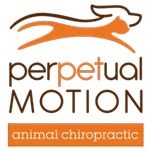It used to be that osteoporosis was considered a disease that affected only the elderly. We particularly associated osteoporosis with older women whose backs were slightly hunched over or those who could no longer stand up straight. Today, the truth is that an estimated 20 million American women suffer from osteoporosis, and 80 percent of them don't even know it.
Osteoporosis is a chronic, progressive condition that steals bone from the body, leading to fractures of the hip, spine and wrist. Older people can suffer disability and even death from osteoporosis-related fractures. Alarmingly, one in two women and one in eight men will suffer from an osteoporosis-related fracture in his or her lifetime.
Many people confuse osteoporosis with arthritis, and wait for swollen joints and discomfort before being tested. Even though osteoporosis is painless until a bone fracture occurs, it is important to find out how healthy your bones are now and if need be, adjust your lifestyle to avoid this brittle bone disease. The American Chiropractic Association recommends the following tips to maintain healthy bones:
- Start a regular exercise program. Walking, skipping rope, jogging, playing racquet sports, swimming and aerobics are all helpful in reducing the risk of osteoporosis. Exercising for 20 minutes, three times a week, is helpful.
- Although weight lifting exercises are generally recommended, the National Osteoporosis Foundation says those suffering from osteoporosis should consult their health care practitioner before beginning a weight lifting program because excessive strain on the bones could result.
- Those with severe osteoporosis and who have suffered from fractures may find Tai Chi, a form of martial arts, to be a beneficial strength training exercise system.
- People suffering from osteoporosis should be careful when bending and lifting heavy objects, including grandchildren. Bend from the knees, not the waist, when lifting, and try to avoid hunching while sitting or standing.
- Be sure to include calcium in your daily diet. The National Institutes of Health's recommendations are 1,000 mg/day for post-menopausal women taking estrogen; 1,500 mg/day for postmenopausal women not taking estrogen, and 1,500 mg/day for men and women over 65 years of age.
- If you are looking for a calcium supplement, try one that's highly absorbable, such as microcrystalline hydroxyapatite concentrate (MCHC), or one of the malates, fumarates, succinates, glutarates, or citrates. But don't overdo it. Taking more than the recommended amount of calcium may cause kidney stones.
- Consider taking additional nutritional supplements, such as vitamin D, C, magnesium, zinc and silica after consulting with your doctor of chiropractic.
- Eat a healthy, balanced diet, including fresh vegetables, fruit, nuts and seeds. Try broccoli, kale, collard greens, cabbage and turnip greens. Experiment with tofu, salmon, sardines and grains. Low-fat milk and/or yogurt are good sources of calcium. (A glass of low-fat milk and a cup of yogurt add 600 mg of calcium to your daily diet.)
- Drink 8 eight-ounce glasses of water a day (herb teas, juices and coffee are not a substitute for water.) Avoid caffeine, carbonated sodas, alcohol, baked goods and junk food.
- Watch your animal protein intake.
